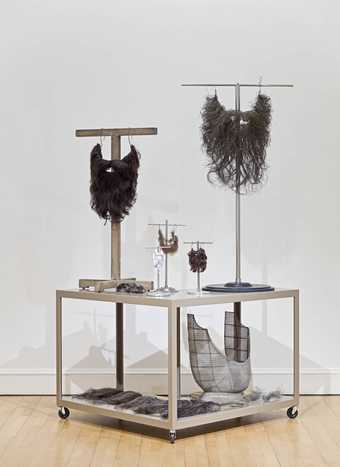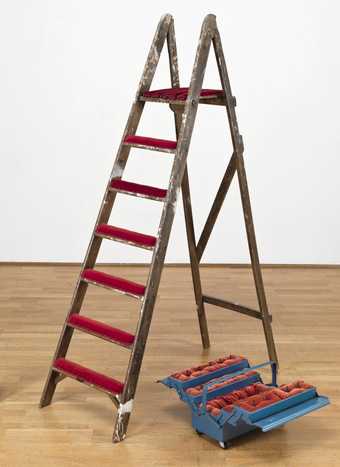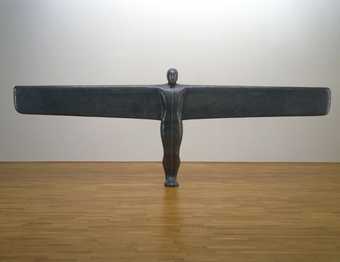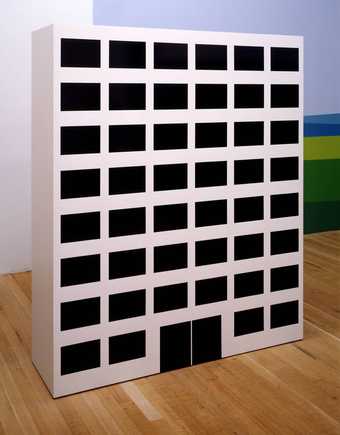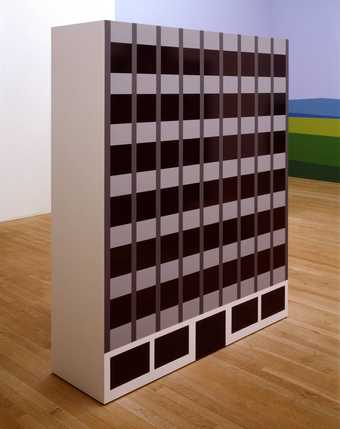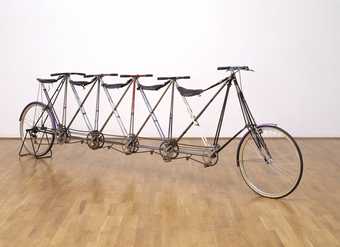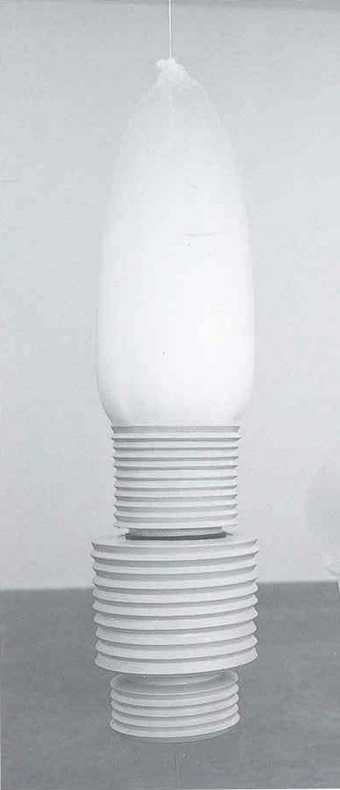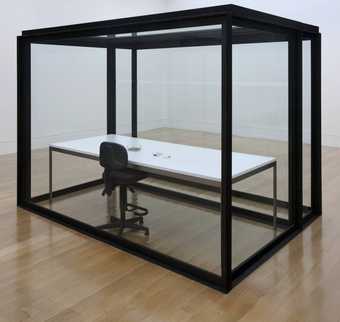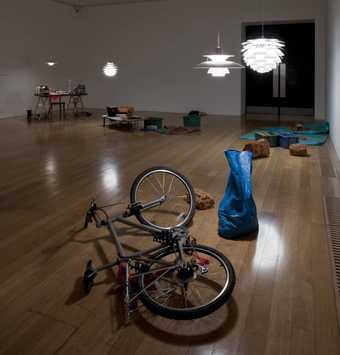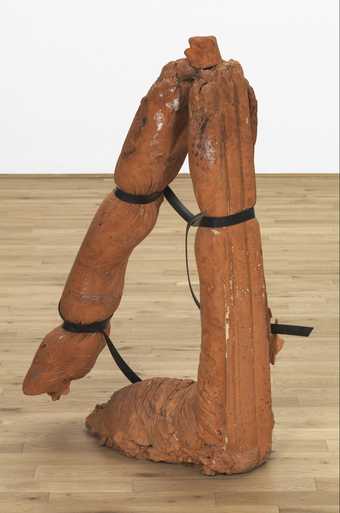Not on display
- Artist
- Elizabeth Wright born 1964
- Medium
- Steel, rubber and plastic
- Dimensions
- Object: 1240 × 2360 × 550 mm
- Collection
- Tate
- Acquisition
- Purchased 2002
- Reference
- T07936
Summary
This sculpture is a replica of a racing bicycle scaled up to 135% of its normal size. The bike is accurately reproduced with all its component parts. It looks used, showing the signs of wear and tear of a real bicycle including rust and scuff marks on the bodywork and slightly flat and worn tires. The frame is made of welded steel, while the wheels, saddle, pump and other components are made from rubber, plastic and wood. Wright based the sculpture on her boyfriend’s bicycle. She dismantled the original bike, photographed it and made enlarged replicas of each individual part. She then pieced the components together in an oversized reconstruction.
The sculpture was first shown in the group exhibition Belladonna at the Institute of Contemporary Arts, London, in 1997 where it was positioned unobtrusively in a corridor outside the main gallery. The sculpture’s placement outside the formal gallery space gave the impression that it has been momentarily abandoned by a careless owner. More recent exhibitions, including New Labour at the Saatchi Gallery in 2001, have reproduced this apparently casual placement, showing the work attached to railings. The audience does not at first recognise the object as a work of art. Despite the outsized scale of the sculpture, its inconspicuous situation ensures that it is only on second glance that its hand-made quality and disconcerting dimensions become apparent. This bicycle, literally larger than life, is closely related to Stolen Bicycle Enlarged to 165%, 1998 (collection of the artist), an oversized bicycle wheel and lock. A more recent work, Mini Escort Enlarged to 130%, 1999 (collection of the artist), is a scaled up Mini car, complete with dents, scratches and peeling bumper stickers.
Wright has played with distortions of scale in her sculptures throughout her career. Signature works include a telephone directory reduced to 70% of its normal size (which necessitated 30% of the pages being removed at random) and cigarette ends and burnt matches enlarged by 180%. Wright transforms everyday objects by meticulously replicating them in unexpected sizes, causing a double-take in the viewer. She decides on the scale of the enlargement or reduction by trial and error. Despite the precise, mathematical percentages in the titles of her works she does not rely on rulers or other measuring tools when making her sculptures. Instead she bases the components on close observation of the original objects. As is the case with this work, the change in scale is often just enough to render the object disquieting or uncanny.
Fabricating commonplace, often overlooked objects is a strategy familiar from the work of Peter Fischli (born 1952) & David Weiss (born 1946), whose installations replicate everyday objects in painted polyurethane. Wright’s shifts of scale, while calling to mind the playful soft sculptures of Claes Oldenburg (born 1929; see Soft Drainpipe - Blue (Cool) Version, 1967, Tate T01257), are closer visually to the work of Charles Ray (born 1953), who has created eight foot tall fashion mannequins (Fall ’91, 1992, Museum of Contemporary Art, Los Angeles) and a toy fire engine scaled up to the size of a real fire engine (Firetruck, 1993, Broad Art Foundation, Santa Monica).
Further reading:
Patricia Ellis, New Labour, exhibition catalogue, Saatchi Gallery, London, 2001, reproduced back cover in colour.
Rebecca Fortnum, ‘A Slight Intervention: on the work of Elizabeth Wright and Ceal Floyer’, Make, no.83, March-May 1999, pp.26-7.
David Barrett, ‘Tipping the Scales: David Barrett on Elizabeth Wright’, Art Monthly, no.199, September 1996, pp.24-5.
Rachel Taylor
December 2003
Does this text contain inaccurate information or language that you feel we should improve or change? We would like to hear from you.
Explore
- emotions, concepts and ideas(16,416)
-
- formal qualities(12,454)
-
- visual illusion(118)
- universal concepts(6,387)
-
- illogicality(17)
- transformation(186)
- transport: land(2,189)
-
- bicycle(196)
You might like
-
Robert Therrien No Title (Beard Cart)
2004 -
Cathy De Monchaux Trolley
1987 -
Sir Antony Gormley OBE RA A Case for an Angel III
1990 -
Julian Opie You see an office building. 3
1996 -
Julian Opie You see an office building. 5
1996 -
Marc Quinn No Visible Means of Escape IV
1996 -
Jake Chapman, Dinos Chapman Little Death Machine (Castrated)
1993 -
Cathy De Monchaux Never forget the power of tears
1997 -
Simon Starling Five-Man Pedersen (Prototype No.1)
2003 -
Roger Hiorns Untitled
2003 -
Roger Hiorns Untitled
2005 -
Roger Hiorns Untitled
2005 -
Damien Hirst The Acquired Inability to Escape
1991 -
Simon Starling Work Made-ready, Les Baux de Provence (Mountain Bike)
2001 -
Michael Dean shored (working title)
2016


